When comparing the Mercedes GLA and the VW T-Roc, two robust contenders in the compact SUV segment, potential buyers stand at a crossroads of luxury and practicality. Both models shine bright with distinctive features and technologies that cater to modern drivers' desires. In this article, we will delve into the technical specifications, innovative features, and design details that set these vehicles apart.
Mercedes GLA vs VW T-Roc – Which one offers the better deal?
Compare performance, boot capacity, efficiency and price at a glance.
Find out which car is the better choice for you – Mercedes GLA or VW T-Roc?
Performance and Engine Options
The 2024 Mercedes GLA offers an impressive lineup of engine options, including petrol MHEV, diesel, plug-in hybrid, and standard petrol variants. With power outputs ranging from 116 HP to a staggering 421 HP in the high-performance AMG model, the GLA caters to various driving preferences. The efficient consumption rates also appeal to budget-conscious consumers, with figures as low as 1.1 L/100km for the plug-in hybrid model.
On the other hand, the 2024 VW T-Roc provides a selection of petrol and diesel engines, with power outputs from 115 HP to 300 HP. The T-Roc's manual and automatic transmission options, coupled with a particularly sporty variant capable of accelerating from 0 to 100 km/h in just 4.9 seconds, make it an engaging vehicle to drive.
Dimensions and Design
Both SUVs showcase striking designs that reflect their brand identities. The GLA measures 4412 mm in length, 1834 mm in width, and stands 1616 mm tall. Its stylish contours and robust stance give it a premium feel, complemented by a spacious 425 L trunk capacity.
The T-Roc, slightly shorter at 4236 mm and wider at 1819 mm, features a more youthful appearance, emphasizing a sporty compact SUV aesthetic. Its practicality is evident with a trunk capacity of 445 L, making it a versatile option for everyday use.
Driving Experience and Comfort
With a range of drive types, including front-wheel and all-wheel drive, the GLA ensures excellent handling and traction in diverse conditions. The cabin is designed for comfort, providing ample space for five passengers and incorporating plush materials throughout.
The T-Roc, offering similar seating capabilities, stands out with its customizable interior options and tech-savvy features. Drivers can enjoy variable driving assistance technologies and an optional digital cockpit that enhances visibility and situational awareness.
Technological Innovations
Mercedes-Benz has equipped the GLA with advanced tech features such as the MBUX infotainment system, which includes AI-driven voice control for navigation and media. The hands-free driving capacity, especially in the higher-end models, showcases the brand's commitment to innovation and safety.
On the other hand, the T-Roc boasts an impressive array of technology, including a user-friendly infotainment system and smart driver assistance features. Its optional FIS display can be tailored to suit the driver’s preferences, further enhancing the driving experience.
Final Thoughts: Style Meets Functionality
Choosing between the Mercedes GLA and the VW T-Roc ultimately boils down to personal preference. The GLA leans heavily towards luxury, technological advancement, and sporty performance, making it an ideal choice for those prioritizing a top-tier driving experience. However, the T-Roc shines with practicality, customizable tech features, and a sporty demeanor suitable for everyday adventures.
Both vehicles have distinct advantages and cater to a diverse set of needs. Whether consumers prefer the luxury of the GLA or the versatility of the T-Roc, each SUV has something unique to offer in the competitive landscape of modern automobiles.
Here’s where it gets real: The technical differences in detail
Costs and Efficiency:
When it comes to price and running costs, the biggest differences usually appear. This is often where you see which car fits your budget better in the long run.
VW T-Roc has a significantly advantage in terms of price – it starts at 26400 £, while the Mercedes GLA costs 38800 £. That’s a price difference of around 12398 £.
Fuel consumption also shows a difference: Mercedes GLA manages with 2.90 L and is therefore convincingly more efficient than the VW T-Roc with 5.50 L. The difference is about 2.60 L per 100 km.
Engine and Performance:
Power, torque and acceleration are the classic benchmarks for car enthusiasts – and here, some clear differences start to show.
When it comes to engine power, the Mercedes GLA has a significantly edge – offering 421 HP compared to 150 HP. That’s roughly 271 HP more horsepower.
In acceleration from 0 to 100 km/h, the Mercedes GLA is significantly quicker – completing the sprint in 4.30 s, while the VW T-Roc takes 8.90 s. That’s about 4.60 s faster.
In terms of top speed, the Mercedes GLA performs noticeable better – reaching 270 km/h, while the VW T-Roc tops out at 212 km/h. The difference is around 58 km/h.
There’s also a difference in torque: Mercedes GLA pulls clearly stronger with 500 Nm compared to 250 Nm. That’s about 250 Nm difference.
Space and Everyday Use:
Beyond pure performance, interior space and usability matter most in daily life. This is where you see which car is more practical and versatile.
Both vehicles offer seating for 5 people.
In curb weight, VW T-Roc is barely noticeable lighter – 1465 kg compared to 1570 kg. The difference is around 105 kg.
In terms of boot space, the VW T-Roc offers slight more room – 475 L compared to 435 L. That’s a difference of about 40 L.
In maximum load capacity, the Mercedes GLA performs hardly perceptible better – up to 1430 L, which is about 80 L more than the VW T-Roc.
When it comes to payload, VW T-Roc barely noticeable takes the win – 515 kg compared to 500 kg. That’s a difference of about 15 kg.
Who wins the race?
The Mercedes GLA proves to be leaves the rival little chance and therefore becomes our DriveDuel Champion!
Mercedes GLA is the better all-rounder in this comparison.
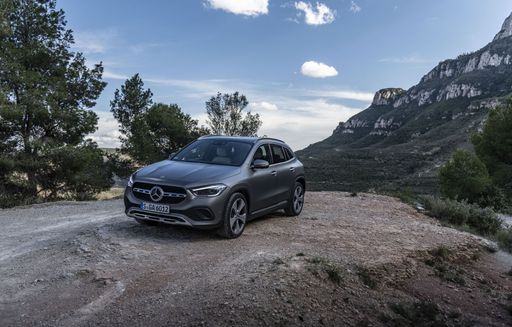
Mercedes GLA
Mercedes GLA
The Mercedes-Benz GLA presents itself as a compact yet stylish option in the luxury SUV market. Its interior offers a blend of sophisticated design and cutting-edge technology, providing a comfortable and connected driving experience. The GLA's agile handling and dynamic performance make it well-suited for both urban environments and longer journeys.
details @ group-media.mercedes-benz.com
@ group-media.mercedes-benz.com
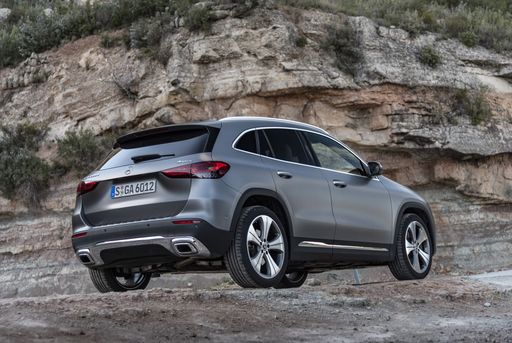 @ group-media.mercedes-benz.com
@ group-media.mercedes-benz.com
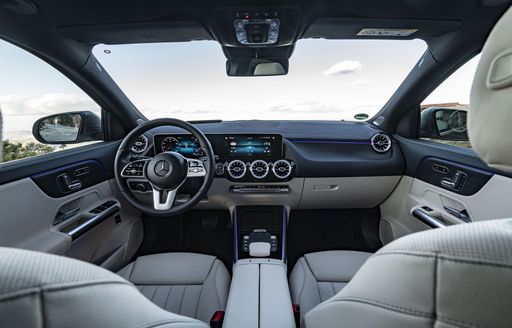 @ group-media.mercedes-benz.com
@ group-media.mercedes-benz.com
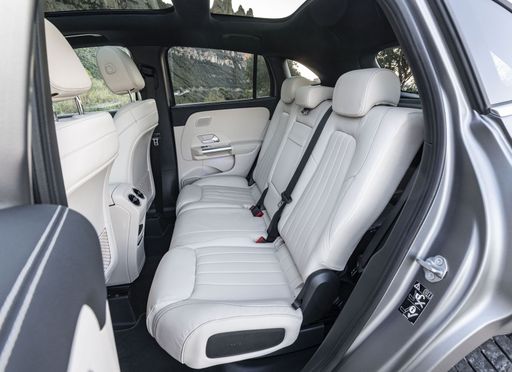 @ group-media.mercedes-benz.com
@ group-media.mercedes-benz.com
VW T-Roc
The VW T-Roc seamlessly blends stylish design with practical functionality, making it an ideal choice for those who enjoy both urban and countryside driving. Its modern interior features intuitive technology and comfortable seating, enhancing the overall driving experience. With its robust build and dynamic performance, the T-Roc is equipped to handle various road conditions with confidence.
details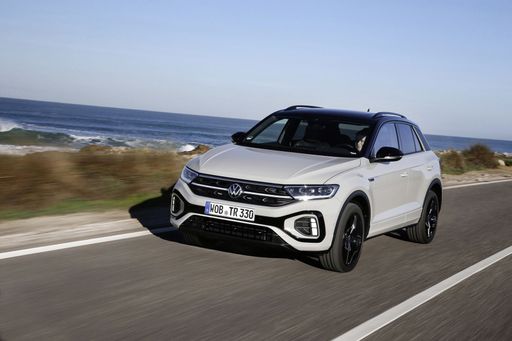 @ Volkswagen
@ Volkswagen
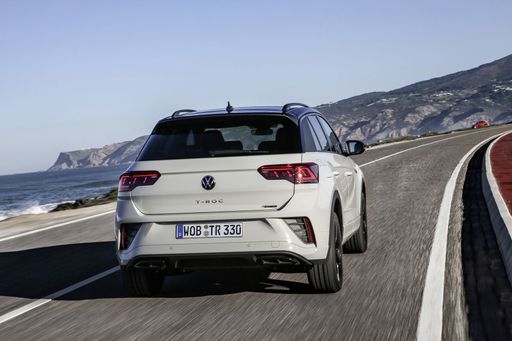 @ Volkswagen
@ Volkswagen
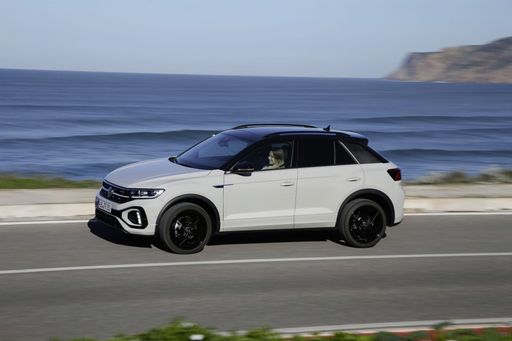 @ Volkswagen
@ Volkswagen
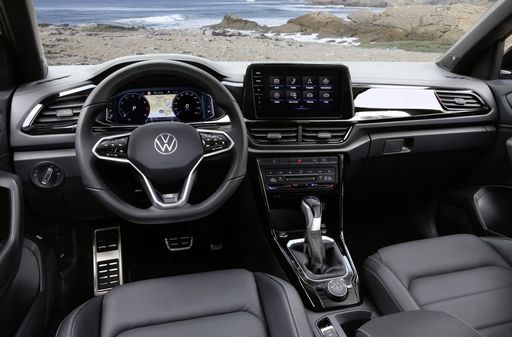 @ Volkswagen
@ Volkswagen

|

|
|
|
|
Costs and Consumption |
|
|---|---|
|
Price
38800 - 75300 £
|
Price
26400 - 38000 £
|
|
Consumption L/100km
2.9 - 9.5 L
|
Consumption L/100km
5.5 - 6.3 L
|
|
Consumption kWh/100km
-
|
Consumption kWh/100km
-
|
|
Electric Range
74 km
|
Electric Range
-
|
|
Battery Capacity
12.90 kWh
|
Battery Capacity
-
|
|
co2
66 - 216 g/km
|
co2
126 - 143 g/km
|
|
Fuel tank capacity
35 - 51 L
|
Fuel tank capacity
50 L
|
Dimensions and Body |
|
|---|---|
|
Body Type
SUV
|
Body Type
SUV
|
|
Seats
5
|
Seats
4 - 5
|
|
Doors
5
|
Doors
2 - 5
|
|
Curb weight
1570 - 1810 kg
|
Curb weight
1465 - 1539 kg
|
|
Trunk capacity
385 - 435 L
|
Trunk capacity
284 - 475 L
|
|
Length
4412 - 4443 mm
|
Length
4271 - 4373 mm
|
|
Width
1834 - 1849 mm
|
Width
1811 - 1828 mm
|
|
Height
1590 - 1616 mm
|
Height
1527 - 1573 mm
|
|
Max trunk capacity
1385 - 1430 L
|
Max trunk capacity
1350 L
|
|
Payload
480 - 500 kg
|
Payload
368 - 515 kg
|
Engine and Performance |
|
|---|---|
|
Engine Type
Plugin Hybrid, Petrol MHEV, Diesel, Petrol
|
Engine Type
Petrol, Petrol MHEV
|
|
Transmission
Automatic
|
Transmission
Manuel, Automatic
|
|
Transmission Detail
Dual-Clutch Automatic
|
Transmission Detail
Manual Gearbox, Dual-Clutch Automatic
|
|
Drive Type
Front-Wheel Drive, All-Wheel Drive
|
Drive Type
Front-Wheel Drive
|
|
Power HP
116 - 421 HP
|
Power HP
115 - 150 HP
|
|
Acceleration 0-100km/h
4.3 - 11 s
|
Acceleration 0-100km/h
8.9 - 12.3 s
|
|
Max Speed
190 - 270 km/h
|
Max Speed
187 - 212 km/h
|
|
Torque
230 - 500 Nm
|
Torque
200 - 250 Nm
|
|
Number of Cylinders
4
|
Number of Cylinders
3 - 4
|
|
Power kW
85 - 310 kW
|
Power kW
85 - 110 kW
|
|
Engine capacity
1332 - 1991 cm3
|
Engine capacity
999 - 1498 cm3
|
General |
|
|---|---|
|
Model Year
2024 - 2025
|
Model Year
2024 - 2025
|
|
CO2 Efficiency Class
B, E, F, G
|
CO2 Efficiency Class
E, D
|
|
Brand
Mercedes-Benz
|
Brand
VW
|
What drivetrain options does the Mercedes GLA have?
Available configurations include Front-Wheel Drive or All-Wheel Drive.
The prices and data displayed are estimates based on German list prices and may vary by country. This information is not legally binding.
